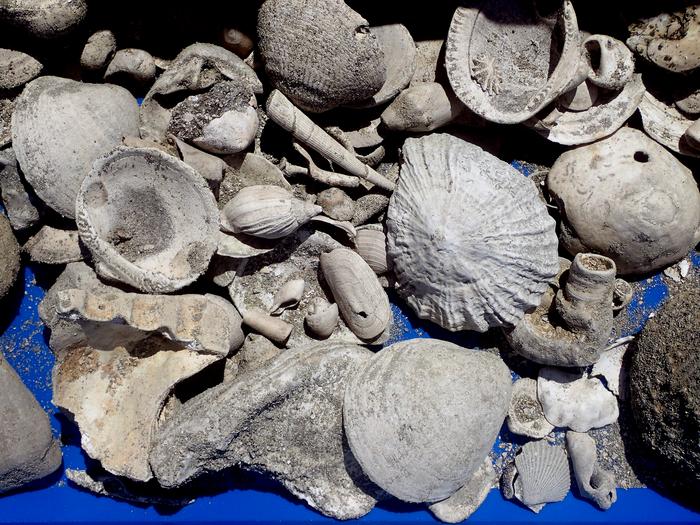A new New Zealand Journal of Geology and Geophysics paper out today describes the 266 fossil species as one of the richest and most diverse groups of three-million-year-old fauna ever found in New Zealand. At least ten previously unknown species will be described and named in future research.

Credit: Bruce Hayward.
A new New Zealand Journal of Geology and Geophysics paper out today describes the 266 fossil species as one of the richest and most diverse groups of three-million-year-old fauna ever found in New Zealand. At least ten previously unknown species will be described and named in future research.
Fossil treasure trove from Auckland’s Mangere Wastewater Treatment Plant
In 2020, when Auckland’s Watercare were excavating two huge vertical shafts for a major upgrade of the major pipeline that brings raw sewage for treatment from the central city they dug through an ancient shell bed. Auckland paleontologist Bruce Hayward likened it to “finding gold right on your door step”. Once they were informed of the fossil deposit’s significance, Watercare and their contractors were eager to help and a huge heap of shelly sand was dumped in a nearby paddock so that paleontologists could search through it over many months. Watercare also funded two paleontology graduate students, working under the supervision of Auckland Museum curator Dr Wilma Blom, to painstakingly sift through the heap for many weeks. As a result, it is estimated that over 300,000 fossils were examined and several thousand have been returned in the museum as a record of this “once-in-a-lifetime find”.
“Detailed identification of the fossils shows that they were deposited between 3 and 3.7 million years ago in a subtidal channel in an early version of the modern Manukau Harbour”, said Dr Hayward. “At that time, sea level was slightly higher than it is today as the world was also several degrees warmer than now. As a result, the fossils include a number of subtropical species, whose relatives today live in the warmer waters around the Kermadec and Norfolk islands. At least ten previously unknown species are present and will be described and named in future work.”
In their scientific paper that appeared this week in the New Zealand Journal of Geology and Geophysics, the five authors record 266 different fossil species, making it the richest and most diverse fauna of its age ever found in New Zealand. “What is surprising,” says lead author Dr Hayward “is that the fauna contains fossils that lived in many different environments that have been brought together in the ancient marine channel by wave action and strong tidal currents. It includes ten specimens of the iconic NZ flax snail that must have lived on the adjacent land and been washed down into the sea by storm runoff. These are by far the oldest known flax snails in the world. Most of the fossils lived on the sea floor, some in brackish estuaries, others attached to hard rocky shorelines and still more have been carried in from offshore of the exposed west coast at the time.”
“Rare finds have included isolated baleen whale vertebrae, a broken sperm whale tooth, the spine of an extinct sawshark, dental plates of eagle rays and a number of great white shark teeth.” The work has been dedicated to Dr Alan Beu, New Zealand’s leading molluscan fossil expert, who was working on the fossils when he passed away earlier this year.
Journal
New Zealand Journal of Geology and Geophysics
DOI
10.1080/00288306.2023.2243234
Article Title
A diverse Late Pliocene fossil fauna and its paleoenvironment at Māngere, Auckland, New Zealand
Article Publication Date
27-Aug-2023




